-
Posts
5,391 -
Joined
-
Last visited
-
Days Won
3
Content Type
Profiles
Forums
Blogs
Gallery
Events
Store
Posts posted by Gordon Williamson
-
-
Yet another photo which was advertised as Feldgendarmerie (and indeed there is a Feldgendarm present), but much more interesting however, and infinitely rarer to find where photographic evidence is concerned is the MKP NCO standing next to him.
I've been looking for MKP photos for ages, for a forthcoming book on military police formations, and had just about given up on finding any.
I could count on the fingers of one hand the number of photos I've ever seen with the MKP Gorget beeing worn, not only is there one here, but note the unorthodox position, under the breast eagle on the right breast, not centred on the chest.
Note that this is after the change from Wasserschutzpolizei uniforms to Kriegsmarine uniform. The NCO wears both the standard KM breast eagle and the Polizei sleeve eagle. No Marinek?stenpolizei cuffband however.
So far the only evidence of either the cuffband or gorget being worn that I have found has been on the Kriegsmarine rather than Wasserschutzpolizei uniform. But evidence of either is incredibly rare.
Once again, good old EBay.
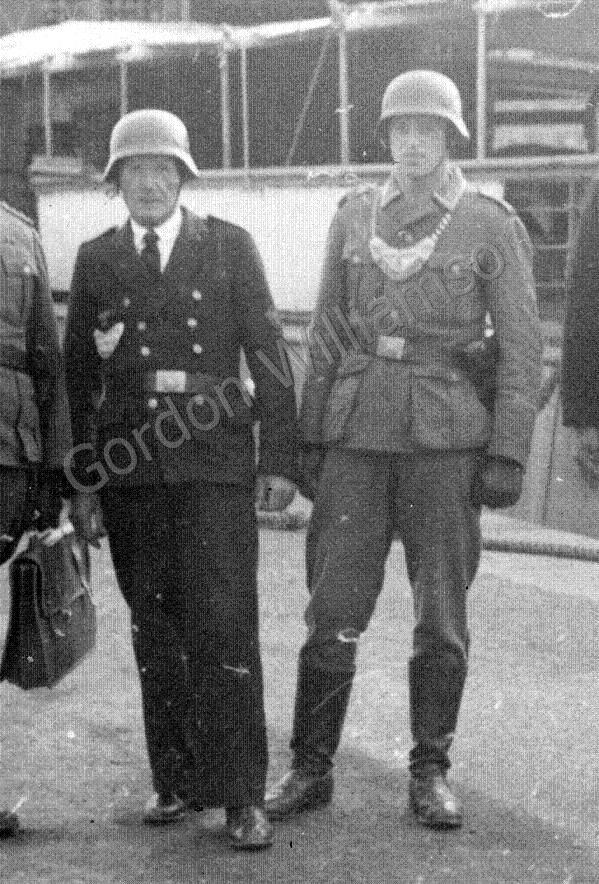 0
0 -
Hi John,
I'd say yours is most likely a Mayer.
As we know, when Schickle ceased production in 1941, their tooling was sold off by the local chamber of commerce (Handelskammer). I believe that Mayer (who of course were located in the same area) purchased at least some of that tooling including the Destroyer badge, hence the absolutely identical die characteristics. It seems likely if this is the case, that supplies of fittings (pins etc) were also acquired hence early Mayer pieces having the same pin fittings as Schickle pieces.
The pin fittings on yours are exactly the same as can be found on some later Mayer pieces including the Zinc version of the "Mayer/Zimmermann/Schickle" style U-Boat badge indicating, to me, the likelyhood of yours being an early tombak Mayer but after the Schickle style pin fittings had been exhausted.
0 -
Many of the early Bundesmarine gothic script tallies are often passed off to the unsuspecting as being from the earlier Kriegsmarine because they use the same gothic style "Fraktur" scipt.
There are some obvious ways in which a few of these can be detected ( such as the use of "Geschwader" for the unit rather than "Flotille" in riobbons like Schnellbootgeschwader) but many can be tricky for the unwary.
These early postwar ribbons, like the earlier Kriegsmarine pieces, can be found in gold wire weave as well as yellow thread.
Hopefully the following list of ribbons which were produced for the Bundesmarine in Fraktur script will be useful in detecting some of these postwar ribbons.
Abschnittskommando Nordsee
Abschnittskommando Ostsee
Amphibische Streitkr?fte
Artillerieschule
1 Ausbildungsbataillon 1
2 Ausbildunfsbataillon 2
3 Ausbildungsbataillon 3
4 Ausbildungsbataillon 4
Ausbildungsregiment
Begleitschiff Eider
Begleitschiff Ems
Begleitschiff Oste
Begleitschiff Trave
Bundesmarine
Fernmeldeabschnitt Nordsee
Fernmeldeabschnitt Ostee
1 Fernmeldeabteilung 1
2 Fernmeldeabteilung 2
Fernmeldekommando
Fernmeldeschule
Flottenbasis Nordsee
Flottenbasis Ostsee
Geleitboot Emden
Geleitboot K?ln
1. Geleitgeschwader
2. Geleitgeschwader
1 Hafenschutzgeschwader
3 Hafenschutzgeschwader
Kommando der Amph. Streitkräfte
Kommando der Flotte
Kommando der Flottenbasis
Komamndo der Marineausbildung
Kommando der Marineflieger
Kommando der Minensuchboote
Kommando der Schnellboote
Kommando der Seestreitkräfte
Kommando der Trossschiffe
Kommando der Zerstörer
1 Küstengeschwader
3 Küstengeschwader
1 Landungsgeschwader
1 Marine-Ausbildungsbataillon
2 Marine-Ausbildungsbataillon
3 Marine-Ausbildungsbataillon
4 Marine-Ausbildungsbataillon
Marine-Ausbildungsregiment
Marine-Akademie
Marine Artillerieschule
Marinedienst und Seenotgruppe
Marine-Fernmeldegruppe
Marine-Fernmeldekommando
Marine-Fernmeldeschule
1 Marinefliegergeschawder
2 Marinefliegergeschwader
1 Marinefliegergruppe
2 Marinefliegergruppe
Marine Lehrkompanie
Marinemusikkorps Nordsee
Marinemusikkorps Ostee
Marine-Ortungsschule
Marine-Pionierbataillon
Marine-Seenotstaffel
Marineschule M?rwik
Marine-Unteroffizierschule
Marine-Versorgungschule
Marine-Waffenkommandoi
1 Minensuchgeschwader
2 Minensuchgeschwader
3 Minensuchgeschwader
4 Minensuchgeschwader
5 Minensuchgeschwader
6 Minensuchgeschwader
8 Minensuchgeschwader
Ortungsabschnitt Nordsee
Ortungsabschnitt Ostsee
Ortungsschule
Schiffserprobungskommando
Schiffsmaschinenkommando
1 Schiffsstammabteilung
2 Schiffsstammabteilung
3 Schiffsstammabteilung
4 Schiffsstammabteilung
5 Schiffsstammabteilung
Schiffsstammregiment
1 Schnellbootgeschwader
2 Schnellbootgeschwader
3 Schnellbootgeschwader
4 Schnellbootgeschwader
5 Schnellbootgeschwader
Schnellbootlehrgeschwader
Schulfregatte Brommy
Schulfregatte Gneisenau
Schulfregatte Graf Spee
Schulfregatte Hipper
Schulfregatte Raule
Schulfregatte Scharnhorst
Schulfregatte Scheer
Schulegeschwader Ostsee
Seebataillon
Seestreitkräfte Nordsee
Seestreitkräfte der Nordsee
Seestreitkräfte Ostsee
Seestreitkräfte der Ostsee
Segelschuleschiff Gorch Fock
Stammdienststelle der Marine
Stammdienststelle
Stützpunk Borkum
Stützpunk Bremerhaven
Stützpunk Cuxhaven
Stützpunk Flensburg-Murwik
Stützpunk Kiel
Stützpunk Wilhelmshaven
Technische Marineschule
I Technische Marinescule I
II Technische Marineschule II
Tender Eider
Tender Ems
Tender Oste
Tender Trave
Trossschiff Angeln
Trossschiff Dithmarschen
U-Bootslehrgruppe
Unteroffizierschule
Unterseeboot Hecht
Unterseeboot Hai
Unterwasserwaffenschule
Versorgungschule
Waffenkommando
1 Zerstörergeschwader
Zerstörer 1
Zerstörer 2
Zerstörer 3
Zerstörer 4
Zerstörer 5
Zerstörer 6
In addition to the above official ribbons, some "souvenir" type ribbons could be purchased in the sailors cantines etc, but could npot be worn officially on the sailors cap. These include.
Amphibische Seestreitkräfte
2. Hafenschutzgeschwader
Kieler Woche 1988
Kommando Flottenbasis
Kommando der Truppenversuche
Km-Boot Wolfsburg
Reserve hat Ruh
Minensuchboot Seehund
Minensuchboot Seeigel
Minensuchboot Seelöwe
Minensuchboot Seepferd
Minensuchboot Seeschlange
Minensuchboot Seestern
Schiffskommando
Schnellboot Eismöwe
Schnellboot Raubmöwe
Schnellboot Seeschwalbe
Schnellboot Silbermöwe
Schnellboot Sturmmöwe
Schnellboot Wildschwan
Schnellboot-UW 11
Segelschulschiff Nordwind
Stützpunktkommando Cuxhaven
Stützpunkt Baden-Baden
Stützpunkt Soltau
Taucherboot T.M. 1
Taucherboot T.M. 2
U-Boot Wilhelm Bauer
Please note that not every variant is listed above. For instance the Marinefliegergruppe ribbon exists as
1. Marinefliegergruppe
1. Marine-Fliegergruppe
1. Marine- Fliegergruppe 1.
1. Marine=Fliegergruppe 1.
Which ever variant is encountered however, ALL are postwar.
1 -
Here is a Zimmermann
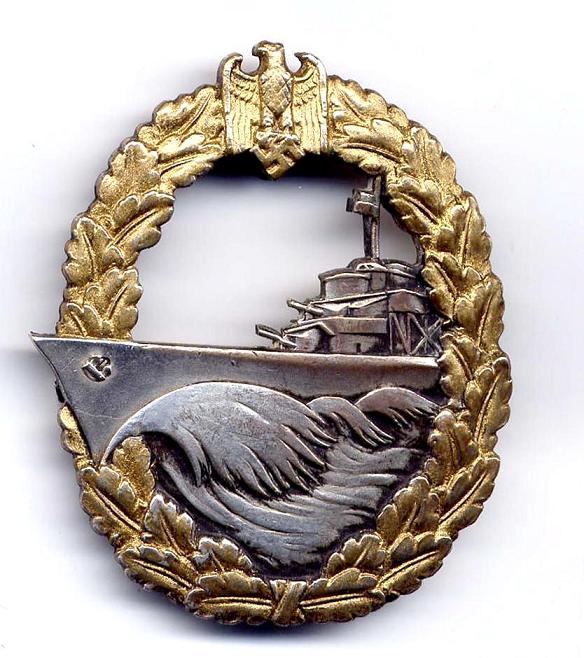 0
0 -
The best reference you can get is the three volume "Kriegsmarine 1939-45" by Lohmann & Hildebrand. Unfortunately the full set is hard to find but it does cover just about everything you could want to know abot the organisation of the Kriegsmarine. It does have details of all the schools, but they aren't listed together but under the various Inspectorates. For example, the section on the Signals Inspectorate has details of all of the Marinenachrichtenschulen.
As far as orginisation is concerned you can get by with Vols 1 and 2 as Vol 3 is devoted to info on people rather the organisation.
You can also find out a great deal online from the website "Lexicon der Wehrmacht" and this link should take you to the Kriegsmarine part.
http://www.lexikon-der-wehrmacht.de/inhalt...GliederungM.htm
You can find out about your Torpedobootflottillen there.
This site is also very useful
http://www.wlb-stuttgart.de/seekrieg/km/km.htm#F
Originally the destroyers were organised into Divisions, with three vessels per division. in the case of 4 Zerst?rerdivision, these were
Anton Schmitt (41) , Karl Galster (42) and Wilhelm Heidkamp (43)
the numbers being the tactical numbers you see painted near the bows of the ships in pre.war photos. The first digit gave the Division, the second the ships number within the division.
The destroyers were reorganised into flotillas before the outbreak of war so 4 Zerst?rerdivision never operated as a combat formation. Also, 4 Zerst?rerdivision did not just change to 4 Zerst?rerflotille, the ships were shuffled around quite a bit in the reorganisation and in some cases more than one Division went into a new Flotilla.
The Kriegsmarine set by Angolia-Schlicht is very good but be careful with the section on tally ribbons. There are some postwar Bundesmarine ribbons listed ( and illustrated) as being Kriegsmarine.
0 -
Hello Bjorn,
Welcome to GMIC !
My opinion is that you most likely have a nice early unmarked badge by Schickle. Schickle sometimes used the flat, square catch also, the L/18 marked Mayer Destroyer badge usually has a square flat catch instead of like this with a round catch. Not impossible for it to be a Mayer, but I would say most likely yours is a Schickle.
Very lucky find, as Schickle badges are rare, certainly rarer than Mayer.
I know of the badge in Tuckers book. The badge itself is certainly genuine but I am not convinced about the L/21 mark.
0 -
Not easy to pick out but you can just about see burnishing to the swas and base of the wreath.
 0
0 -
-
This one just sailed into port today.
I really like my Tombak piece by Schwerin, but it has definitely "been there" and although that's one of the reasons I like it so much, I've been looking around for a Tombak piece in really good condition and this one finally came up.
It has spent the last 60+ years pinned through the leather of an SA belt, along with other naval badges which were placed there by the Vet who brought them back as a souvenir of his service.
The level of gilt finish still remaining is superb, and although it can't really be seen on these scans, the edge of the eagles wing, the swas and the binding to the base of the wreath are all burnished.
A real "sleeper"
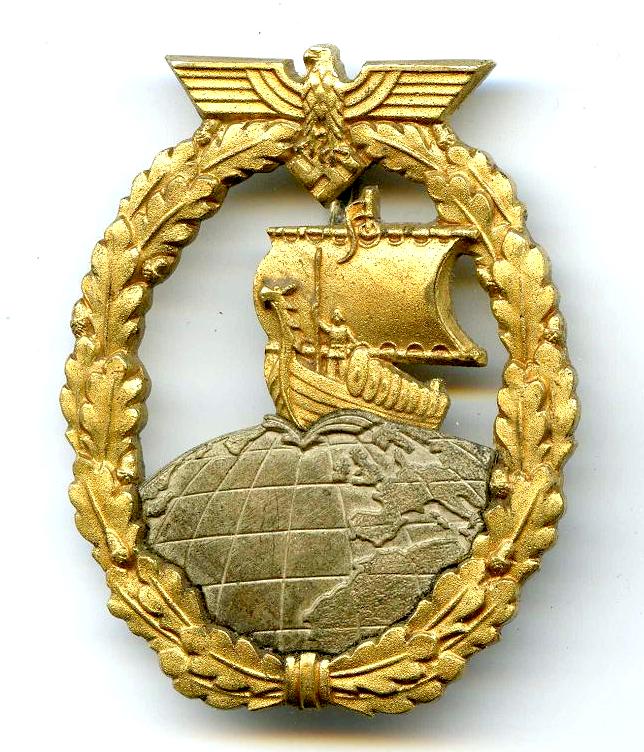 0
0 -
I attributed that to its being the first of the navy badges and copied from the looks of the Heer bagdes. Something that was changed fwith intent for some reason.
Actually the U-Boat War Badge was first (October 1939) and has the spread winged eagle. The Destroyer was the second to be instituted , (in June 1940.)
Its also worth noting that the use of a small national emblem could not just have been one designers predeliction. as there were four different designers involved with KM War badges, Paul Casberg, Otto Placzek, Adolf Bock and Wilhelm Ernst Peekhaus.
Seems unlikely that all four would independently just decide that KM badges would look better with a small eagle/swas. More likely that they knew this to be the preference of Grossadmiral Raeder, the man who would ultimately have to give approval to their design proposals.
0 -
Hi Peter ,
In that case, I'd give it a miss. I'd never trust a cut down one of this type.
I'd take a cut down example in wire weave as I've never seen a convincing fake of one of these, but with the type you illustrated I'd only ever accept a full length one. (anywhere between 48-58 inches)
0 -
Unfortunately these have been very accurately faked. Made, I believe in the UK. I believe at one point you could buy them at the souvenir shop at HMS Belfast, along with modern copies iof the HMS Belfast tally. The problem with the fake Scharnhorst tallies was that they were of the wrong length (way too short) and in the same way as British tallies, the lettering was not centered so that if you laid the tally out there was more "blank" ribbon on one side of the lettering than the other.
A lot of German made fake Scharnhorst tallies have the wrong style of "s" in the word Schlacht s chiff , but these British made pieces had the correct style of lettering and an accurate weave pattern. For that reason a lot of them were I believe, shortened even further to even up the amount of ribbon either side of the lettering and passed of as "cut down" originals.
Impossible to say for sure from the photos of this one. Do you know if it is full length ? If it is, then it has a chance of being good.
Safest ones to buy are examples which are full length with the correct style lettering and in gold wire weave rather than celleon.
0 -
I remember these being discussed a few years back and Frank Heukemes being "on the fence" about them until he actually saw one then condemned it as fake. The was partly because of the strange base material (not being Zinc but some other alloy) and the final killing blow being that the hinge and hook were integral to the badge, not separately applied, in other words the entire thing was a cleverly done casting.
However, this example clearly IS Zinc, and has separately applied fittings (the hinge and hook are rusted so cannot be one-piece with the Zinc body of the badge.) so there must be more than one version of this badge in existence.
This one certainly has the look of age, but given the controversy around them, they certainly aren't unquestioned as a genuine variant.
0 -
Regarding the mention of fakes of the Narvik with the small 4 etc, here is an illustration from a wartime publication on the Kriegsmarine Note that it is a photo, not a drawing.
Firstly, look at the numeral "9" in the date. Clearly it has a shorter , stubbier "tail" than the 9 normally seen. So, any suggestion that the lack of the longer tail on the 9 is suspect is just plain wrong, as clearly wartime pieces also had the shorter tailed 9.
Next, look at the "4". It may be that my eyesight is playing up, but compare the size of the 4 with the 0. To me the 4 looks just that little bit smaller than the 0. Certainly the proportions are different to the original pieces shown in this thread.
I don't doubt that there are fakes around with the shorter, stubby 9 and the smaller 4, but it looks like it might just be that the fakers have copied original types with these features.
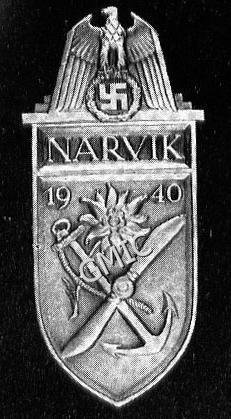 0
0 -
Greetings,
I am looking to do a bit of research. I have a Kriegsmarine tally and I would like to trace the origins. Is there a book that has the tallies of the Kriegsmarine?
Here is a copy of the tally in question.
If any one has any information on this particular one, I would love to hear it.
Thank you and regards,
2dresq
I'm afraid your tally ribbon is not a Kriegsmarine piece. This is an early Bundesmarine tally ribbon. For a short period the Bundesmarine used the same Gothic style script as the Kriegsmarine before changing to block Latin script. This is one of five such Abschnittskommando ribbons,
Abschnittskommando Nordeee
Abschnittskommando Ostsee
Abschnittskommando Nord
Abschnittskommando Ost
Abschnittskommando West
At this point there is only one book on the ribbons of the Kriegsmarine "Die M?tzenb?nder der Kriegsmarine" by Horst Rivier. Long out of print but you can still find copies from time to time. There are many, many ribbons missing from this book which only has drawings rather than photos. It's basically just a list, not much back-up info. There is a companion volume of the ribbons of the Imperial navy.
There is a German publication on the ribbons of the Bundesmarine which, usefully, lists all of those which were done in Gothic script like the Kriegsmarine. Not a huge amount of info, against it's just a list but very useful for identifying ribbons like these Abschnittskommando pieces which might be confused for Kriegsmarine ribbons. When I get time, I will pin a list here of all the Bundesmarine ribbons in Gothic script.
Imperial Ribbons are well covered in the first volume of "Die M?tzenb?nder der Deutschen Marine" by Weddeking & Bodeux, over 440 pages with tons of photos and masses of into. A future volume will cover the Kriegsmarine.
0 -
Agreed ! Very nice and rare straps.
0 -
The lack of arm eagle and cuffband doesn't preclude Feldgendarmerie but although the detail of the Gorget isn't clear - its enough to tell that the lettering does not spell out "Feldgendarmerie, which has only three "tall" letters ( l, d and a second d ) but Bahnhofswache which has four "tall" letters and in different places. :cheers:
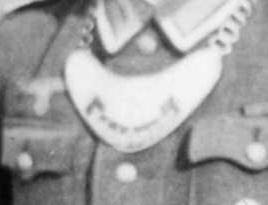
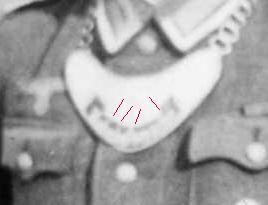 0
0 -
I just love the way sellers of photos assume anyone with a Gorget is Feldgendarmerie.
Another rare photo of a Bahnhofswache guard sold as Feldgendarmerie at a low price.
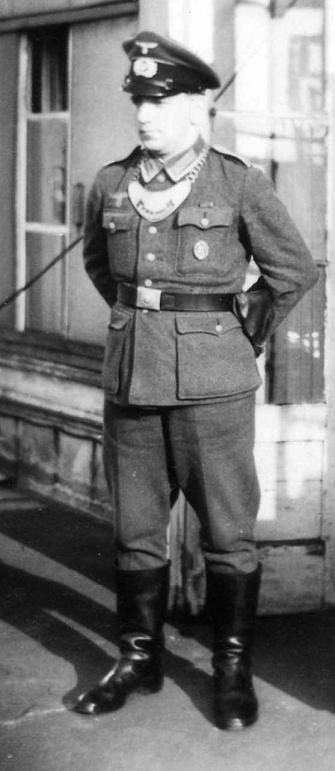 0
0 -
What is particularly interesting here is that apart from being the first photos I've seen of Feldgendarmerie on Crete, it is also the first evidence I've ever come across of the Feldgendarmerie eagle being worn on the shirt ! Even in North Africa on the tropical tunic they mostly only wore the cuffband, no eagle.
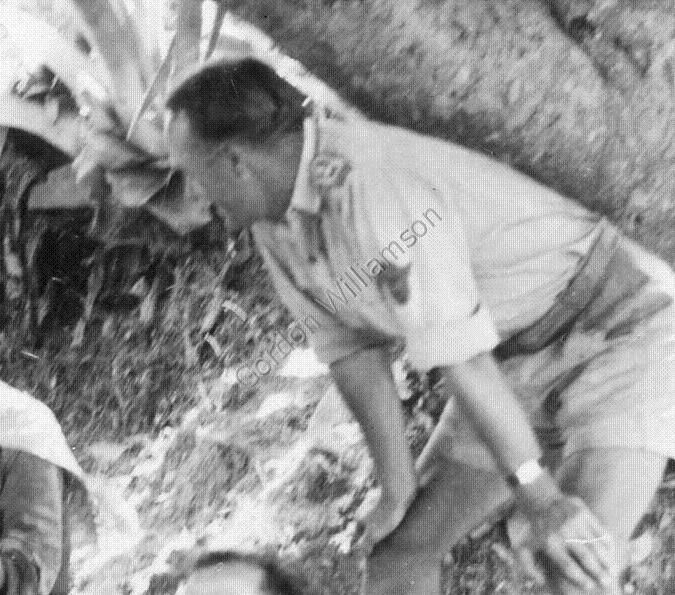 0
0 -
His service takes him from Germany through France, Belgium, Romania, Bulgaria, Greece and then on to Crete, where this shot is taken, where one his buddies is about to get a shave.
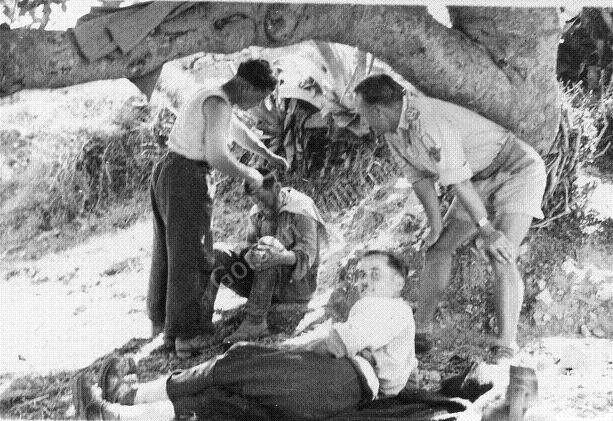 0
0 -
Haven't had time to study everything yet, but it appears that through either illness or injury, he is no longer able to serve in the Pioneers and transfers to the Feldgendarmerie and continues his service right through to May 1945. Soldbuch has a VERY nice uniform photo in tropical dress.
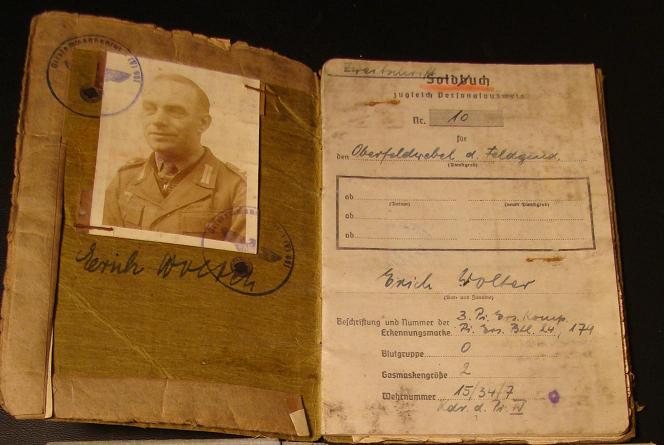 0
0 -
Just picked up a set of Wehrpass, Soldbuch and tons of photos all to the same guy. A former Pioneer, he joined in 1934 in the pre-Wehrmacht days of the old Reichswehr. Already a serving soldier when the new Wehrpass was introduced, it has a nice uniform photo.
 0
0 -
The one that catches the eye is the tall officer in the front row. Amongst all the 8 button front unics, he alone seems to have a five button front tunic with open lapels.
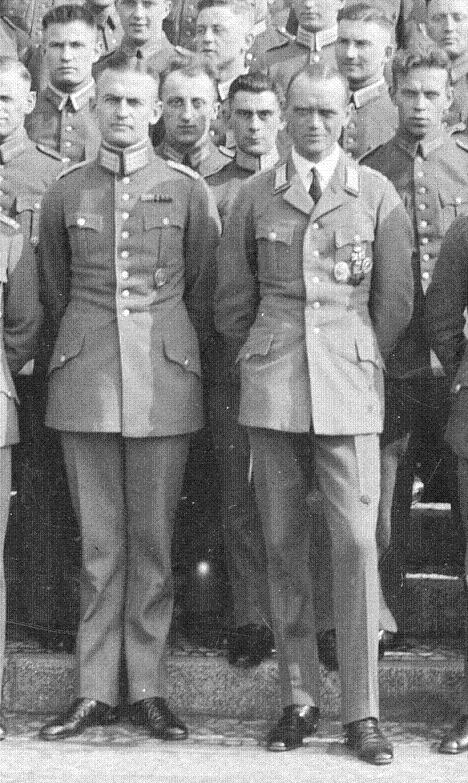 0
0 -
Just picked up a document grouping to an NCO who joined in 1934 and which has a few Reichswehr period photos. Thought this might be of interest. It is a Pioneer Bataillon by the way.
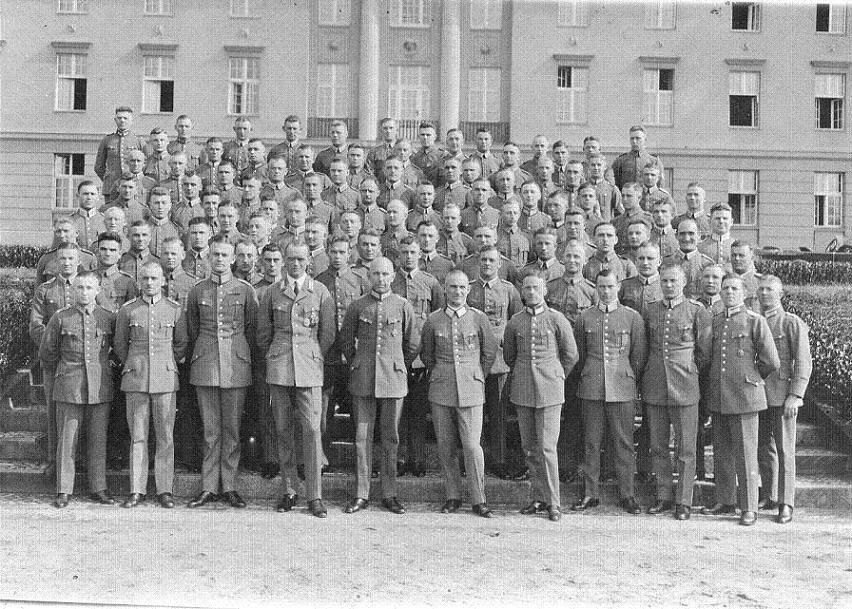 0
0




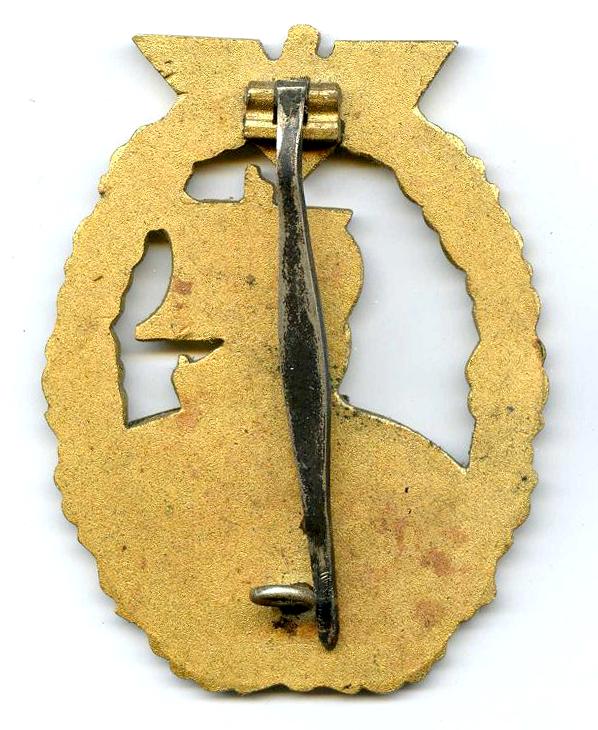
Bergen
in Germany: Third Reich: Research, Documentation & Photographs
Posted
The document itself and the ink stamp look fine. The Admiral der norwegischen Westk?ste was Admiral Otto von Schrader. I dont have another example of his signature to compare with yours but it certainly looks as if the signature on the document could be "v. Schrader"